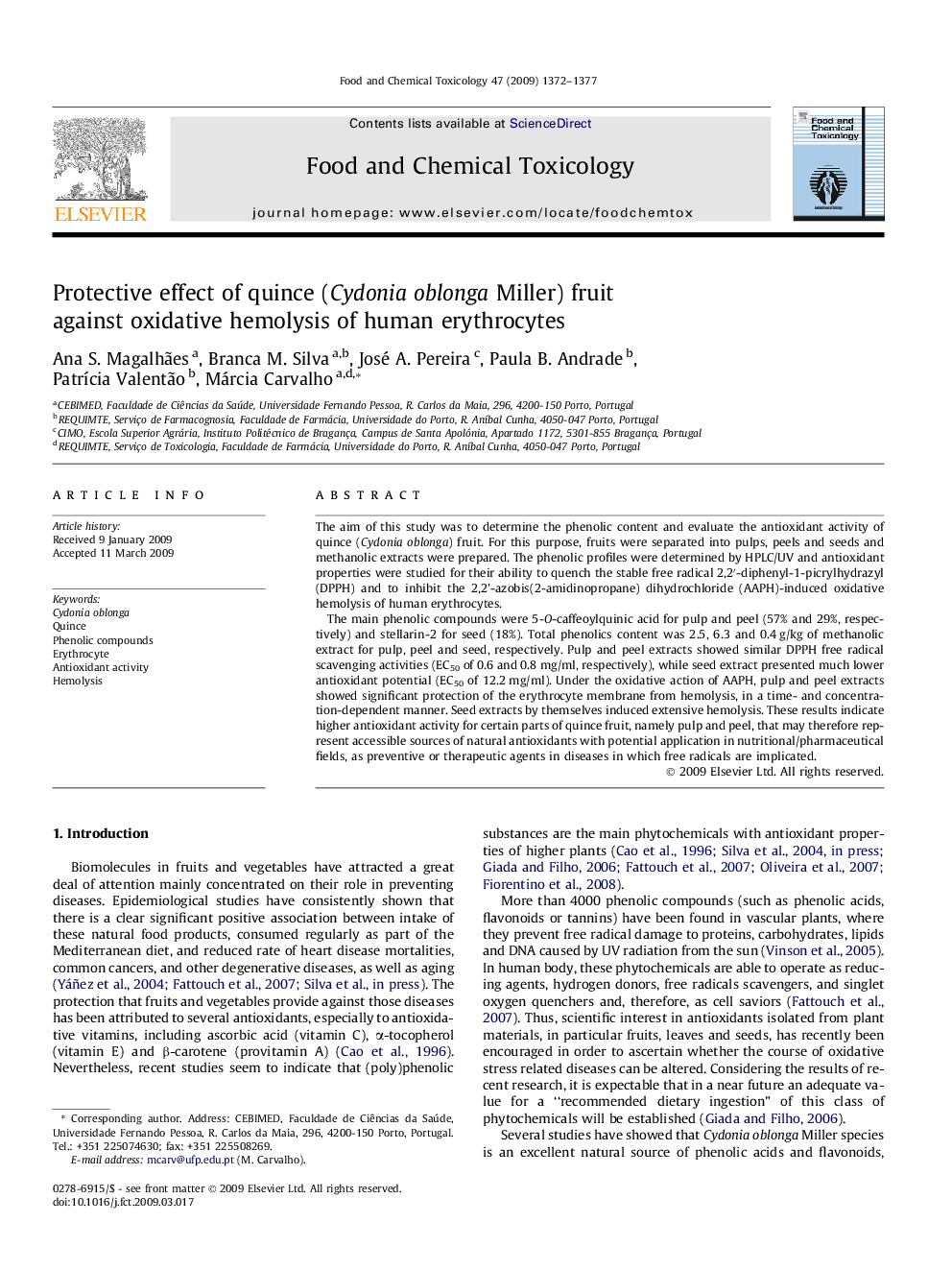| Article ID | Journal | Published Year | Pages | File Type |
|---|---|---|---|---|
| 5854447 | Food and Chemical Toxicology | 2009 | 6 Pages |
The aim of this study was to determine the phenolic content and evaluate the antioxidant activity of quince (Cydonia oblonga) fruit. For this purpose, fruits were separated into pulps, peels and seeds and methanolic extracts were prepared. The phenolic profiles were determined by HPLC/UV and antioxidant properties were studied for their ability to quench the stable free radical 2,2â²-diphenyl-1-picrylhydrazyl (DPPH) and to inhibit the 2,2â²-azobis(2-amidinopropane) dihydrochloride (AAPH)-induced oxidative hemolysis of human erythrocytes.The main phenolic compounds were 5-O-caffeoylquinic acid for pulp and peel (57% and 29%, respectively) and stellarin-2 for seed (18%). Total phenolics content was 2.5, 6.3 and 0.4Â g/kg of methanolic extract for pulp, peel and seed, respectively. Pulp and peel extracts showed similar DPPH free radical scavenging activities (EC50 of 0.6 and 0.8Â mg/ml, respectively), while seed extract presented much lower antioxidant potential (EC50 of 12.2Â mg/ml). Under the oxidative action of AAPH, pulp and peel extracts showed significant protection of the erythrocyte membrane from hemolysis, in a time- and concentration-dependent manner. Seed extracts by themselves induced extensive hemolysis. These results indicate higher antioxidant activity for certain parts of quince fruit, namely pulp and peel, that may therefore represent accessible sources of natural antioxidants with potential application in nutritional/pharmaceutical fields, as preventive or therapeutic agents in diseases in which free radicals are implicated.
